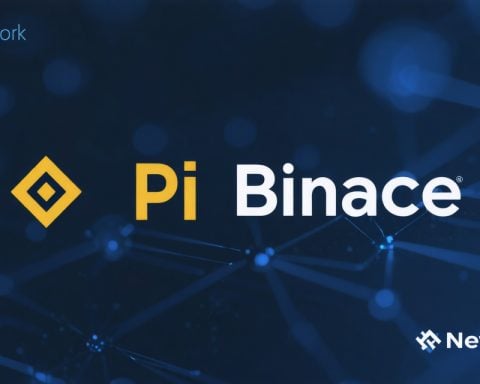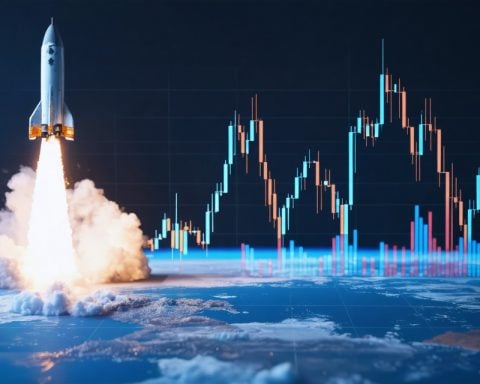- Apple plans to invest $500 billion in the U.S. economy, creating over 20,000 jobs through new manufacturing facilities, demonstrating its confidence in the tech infrastructure industry.
- Microsoft is re-evaluating its data center strategies by canceling several leases, raising questions about potential changes in AI infrastructure demands.
- Palantir faces challenges due to market uncertainty from possible Pentagon budget cuts, affecting its stock due to reliance on government contracts.
- These developments highlight the need for adaptability and foresight as companies navigate volatile economic conditions and shifting priorities.
Apple’s recent announcement reveals ambitious plans to infuse $500 billion into the U.S. economy over the next four years, sparking a wave of optimism. This investment, which includes state-of-the-art manufacturing facilities in Texas, aims to create over 20,000 jobs nationwide. The sheer scale of this operation highlights Apple’s confidence in the American economic landscape and underscores its role as a major player in shaping the future of tech infrastructure.
Meanwhile, in the ever-evolving tech landscape, whispers of turbulence arise as Microsoft takes decisive steps to rethink its data center strategies. The tech giant’s decision to nix several key data center leases hints at a possible glut in the AI infrastructure domain, raising eyebrows and questions among industry analysts. Some speculate this could signal broader market dynamics and shifting priorities within the AI sector.
Amid this technological whirlwind, beleaguered Palantir grapples with investors’ jitters over looming Pentagon budget cuts. The threat of reduced defense spending has sent Palantir shares into a tailspin, highlighting the delicate balance between government contracts and corporate stability in uncertain times.
These market maneuvers illustrate the dynamic interplay between corporate strategies and economic forecasts. Apple’s commitment offers a glimmer of hope and economic resurgence, yet the cautious moves by Microsoft and Palantir serve as sober reminders of the market’s unpredictability. In this climate of bold moves and strategic recalibrations, the key takeaway for observers and investors alike is clear: adaptability and foresight remain crucial in navigating the ever-shifting economic tides.
You Won’t Believe How Tech Giants are Reshaping the Future
Apple’s Economic Infusion: Ambitions and Impact
Real-World Use Cases
Apple’s $500 billion investment into the U.S. economy aims to bolster innovation by establishing cutting-edge manufacturing facilities in Texas. This expansion promises to enhance the output of key Apple products, such as the Mac Pro, fostering technological advances in consumer electronics within the U.S. Moreover, this move could lead to ancillary growth in local tech startups and supply chain businesses, reinforcing the economic ecosystem.
Market Forecasts & Industry Trends
With Apple’s bold initiatives, experts predict a surge in tech-related employment, driving advancements in artificial intelligence, augmented reality, and 5G networks. Such investments are anticipated to maintain the U.S.’s dominance in high-tech manufacturing, particularly as the global tech rivalry with China intensifies. Apple continuously aims to lead in sustainable practices and cutting-edge tech.
Security & Sustainability
Apple’s commitment to sustainability will likely reflect in their construction and operational processes for new facilities. Utilizing renewable energy and green tech to power these locations can reduce carbon footprints, setting a benchmark for other tech companies to follow. This investment includes recycling initiatives and environmentally-friendly materials for manufacturing.
Pros & Cons Overview
Pros:
– Creates over 20,000 jobs, invigorating the U.S. job market.
– Positions the U.S. as a leader in tech innovation.
– Enhances skills development and local tech ecosystems.
Cons:
– High capital expenditure might risk returns if economic conditions worsen.
– Concentration of facilities in Texas may overlook growth in other states.
Microsoft’s Strategic Moves: What You Need to Know
Controversies & Limitations
Microsoft’s move to cancel key data center leases has raised concerns about over-investment in AI infrastructure. This strategic shift may be a response to lower-than-expected returns from AI ventures and indicates potential overcapacity in the short term. Some analysts argue it highlights the necessity for more sustainable AI strategies and flexible infrastructure models, such as edge computing.
Insights & Predictions
In the long run, Microsoft’s recalibration could lead to a more focused approach towards hybrid cloud services and advanced AI applications, securing its competitiveness. This strategic pivot could influence industry giants to refine their AI investments, paving the way for breakthroughs in personalized AI-driven services.
Tutorials & Compatibility
To better understand and adapt to AI infrastructure advancements, users and developers can explore Microsoft’s online resources for AI development tutorials and cloud service integration, enhancing compatibility with emerging technologies. Microsoft provides comprehensive tools to navigate and implement these technologies.
Palantir’s Pentagon Dilemma: A Delicate Balance
Reviews & Comparisons
Palantir’s reliance on government contracts, especially with the Pentagon, underscores a vulnerability compared to more diversified tech firms. Unlike its peers, Palantir’s business model heavily depends on defense budgets, highlighting a potential risk in times of fiscal tightening.
Recommendations
Investors should closely monitor budget policy changes that affect defense spending. Diversifying their portfolios to include firms with a balanced mix of public and private sector clients can mitigate risks associated with sudden government spending cuts.
Actionable Recommendations
1. For Tech Professionals: Leverage new job opportunities in Apple’s expanding U.S. facilities by acquiring skills in advanced manufacturing and tech-driven solutions.
2. For Investors: Monitor sector-specific trends and be flexible in reallocating resources as market dynamics shift, prioritizing companies showcasing sustainable growth and innovation.
3. For Consumers: Stay informed about advancements in consumer electronics that might emerge from Apple’s investments, leading to new product opportunities and technological lifestyle enhancements.
In a constantly evolving tech landscape, staying ahead requires not just adaptability but also a strategic vision, drawing lessons from industry leaders like Apple, Microsoft, and Palantir.



















